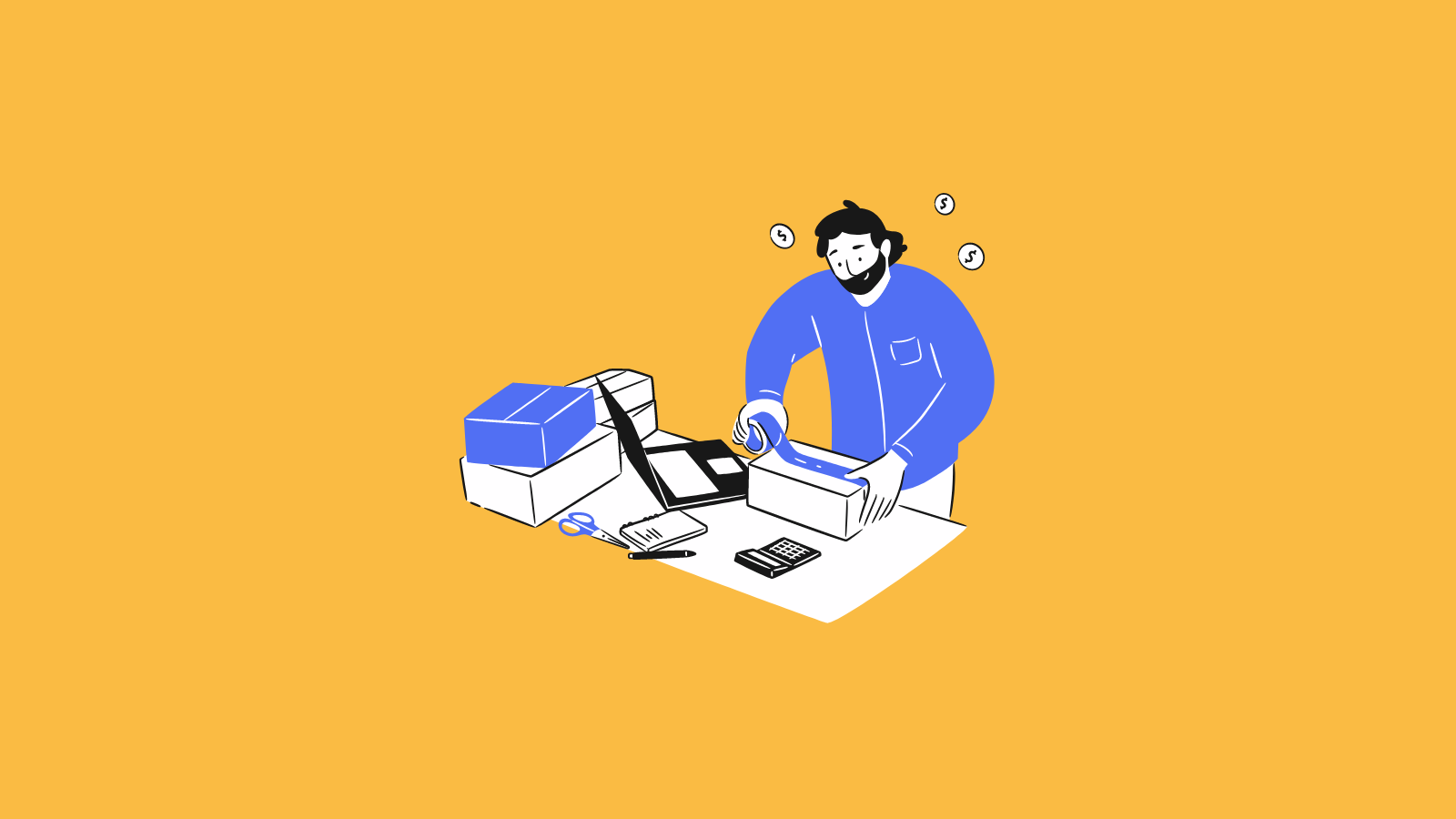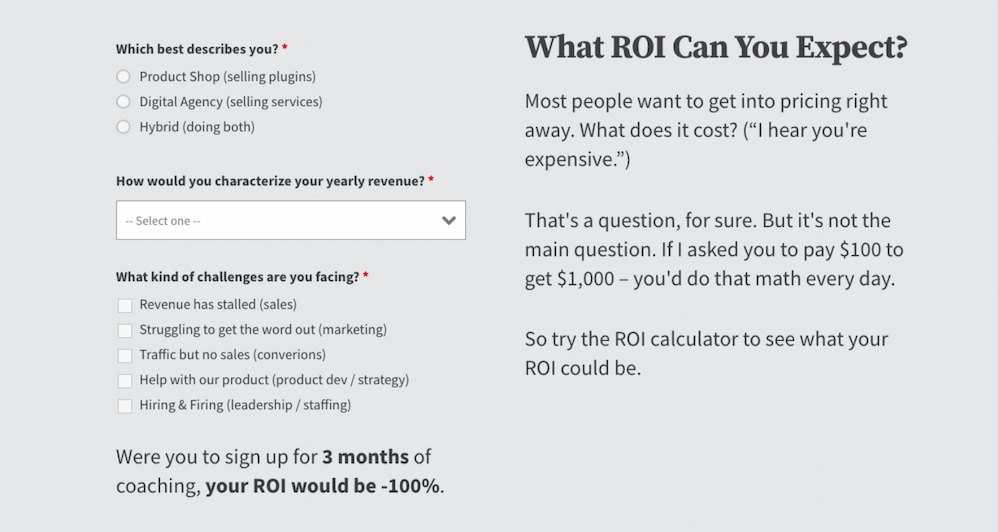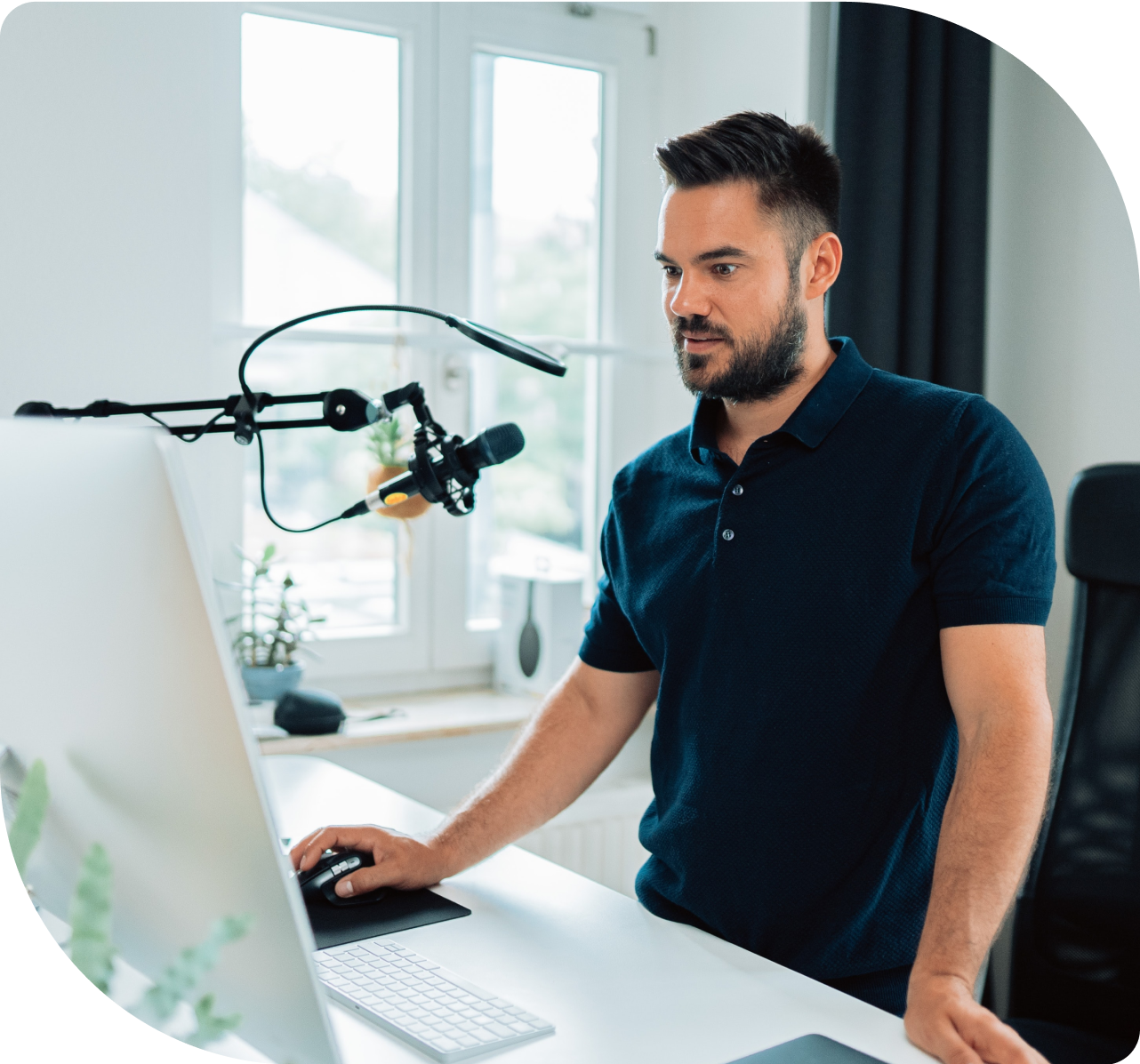How to Sell Coaching Packages (and Scale Your Business)

When you imagined becoming a coach, you probably pictured plenty of one-on-one sessions where you'd work directly with your clients — getting your hands dirty to help them achieve their goals.
That same passion and sense of purpose will be steady staples throughout your entire coaching career, whether you're just getting started or are a well-seasoned expert.
But eventually, you might reach a point where you want to go beyond sporadic or single one-on-one sessions, scale your business, and deliver more value to clients in the process.
Coaching packages are one way to make that happen.
Today we'll cover:
What separates coaching packages from "regular" coaching?
An explainer of what puts the "package" in "coaching package."Why sell coaching packages?
A few notable benefits of selling package offerings.Creating a Coaching Package: 3 steps to structure a solid offer
What to think about when creating your first package.Selling Your Coaching Package: How to get people interested in what you offer
Some tips for marketing and selling your first coaching package.Let's Talk Money: How to price your coaching package
Tips and systems for setting your package price.
What separates coaching packages from "regular" coaching?
The easiest way to think of a coaching package is as a comprehensive coaching offering. Rather than a client purchasing your time or a single session, they can purchase a bundled set of sessions or resources that you’ve thoughtfully curated.
That definition might feel a little vague — but there's a good reason for that. The structure of coaching packages can vary pretty greatly. Here are a few coaching package examples that show all of the different ways they can be put together:
Sessions: Clients can purchase a batch of sessions (for example, six weekly sessions).
Length of time: Clients can purchase a coaching arrangement that extends for a specific amount of time (for example, a three-month coaching engagement).
Resources: Clients can purchase a bundle of coaching sessions that are supplemented by other resources, such as access to a group Slack channel, templates, downloads, post-coaching support, and more.
You could even combine any of the above. For example, your coaching package might include six weekly sessions and free access to your entire resource library.
Regardless of how you structure them, coaching packages mean clients need to go beyond booking a single session at a time (and then weighing whether or not they want to rebook in the future). When they purchase a package, they sign up for a more complete offering — and often, a lengthier and more expensive commitment.
Why sell coaching packages?
Selling a coaching package still involves marketing and selling your expertise — but it's also a lot more like selling an actual product.
Your package feels much more like a tangible offering than simply selling a slot on your calendar or one session at a time.
Because of that, coaching packages (particularly ones that are thoughtful and impactful) take a little bit of elbow grease to put together. But, introducing packages into your coaching business offers several advantages:
Think strategically: You have plenty of wisdom and expertise — it's why you're a coach. But how do you pull together all of that sage advice and knowledge into something that's actually marketable and sellable? Crafting a coaching package requires that you think strategically about not only what you offer but how you can turn it into something that's most accessible and attractive to your ideal clients.
Deliver more value to your clients: You got into coaching because you want to help people succeed. But it's tough to make a meaningful difference in a single session — especially if the client doesn't end up rebooking. Packages require commitment (from both you and the client) and are structured in a way to walk your clients from their starting point all the way to achieving their goals. Plus, since packages often include helpful extras and resources, you're able to make even more of an impact.
Develop a relationship: Similarly, a single session doesn't provide much space to forge a strong bond or relationship. Coaching packages extend over time, meaning you have more time to get to know your clients on a deeper level, deliver a more personalized experience, and make them feel as seen and supported as possible.
Achieve better client results: Combine the above two advantages together and it makes sense that packages help your clients accomplish their goals — often in less time and with less hassle. That's fulfilling when you're their coach and also gives you some solid testimonials, results, and experiences you can showcase in your marketing materials.
Secure more predictable income: On the business side of things, coaching packages are larger (and often more expensive) offerings that can help you get some more steady income. After all, you'd need to sell 20 single sessions at $250 each to equal what you'd make from selling just one $5,000 coaching package.
Creating A Coaching Package: 3 steps to structure a solid offer
The term "coaching package" can feel intimidating — as if you need to figure out a way to offer everything under the sun to your clients.
But getting started with your first package doesn't need to be a daunting task. Here are three simple steps to lay the groundwork for your very first coaching package.
1. Understand the problem
When you decide you want to sell a package, it's tempting to roll up your sleeves and get right into creating it — structuring a curriculum, hashing out your sessions, or creating checklists and resources.
But the most successful coaching packages don't start with the content. They start with the problem.
Ask yourself: What problem will your coaching package help your clients solve?
Whether you help people overcome a fear of public speaking or get out of debt, the most important step is to determine the key pain points of your potential clients.
2. Identify what people actually need to solve the problem
Now that you know the problem, you'll have an easier time identifying the best ways to help clients solve it — or, in other words, what your offer needs to include.
There are tons of different resources and offerings you could include with your coaching package. For example, you could offer:
Access to a community or mastermind
Additional support between sessions or after the coaching engagement
Templates and other downloadable resources
Exclusive tools or discounts
But remember that your package (like so many other things in life and business) should focus on quality over quantity. You're better off including a couple of really thoughtful and helpful resources instead of a ton of seemingly random and disjointed ones.
Maybe your coaching package is focused on helping people improve their fitness. They might see value in personal sessions with you, along with access to a Slack community to keep them accountable and downloadable weekly exercise routines.
If you already have existing resources that you've used with individual coaching clients, it can also be worth exploring how to bundle those into a package. It's an easy way to launch your first coaching package — without having to reinvent the wheel.
3. Iron out your basics
You've figured out the problem that you solve and the different materials you'll offer to help people tackle it. Now it's time to live up to the "package" name by pulling it all together.
This involves figuring out core elements like:
Duration of your coaching package
Inclusions with your coaching package
Delivery of your coaching package
Pricing of your coaching package (which we'll cover in detail next)
If you feel stuck on how to package everything together, don't hesitate to look at what other coaches in your niche are doing. You obviously don't want to copy their exact approach, but it can help provide some inspiration.
Keep in mind that your coaching package can evolve as you learn what works (and what doesn't). Most coaches will readily admit that creating the right package takes several iterations and improvements.
Selling Your Coaching Package: How to get people interested in what you offer
Because coaching packages are typically pricier offerings, they feel a little more intimidating to sell. It's harder to get someone to open their wallet and spend $5,000 as opposed to $200.
Plus, when you put so much work into crafting your coaching package, it's tempting to focus all of your marketing efforts on the elements of the package itself — all of the things people will get when they make a purchase. You're eager to show them just how much stuff they'll get for their money.
Those details do matter, but they shouldn't be the core focus of your marketing and promotion. Ultimately, your clients care most about one thing: results.
What will the coaching package help them achieve? That should be the primary emphasis of how you talk about your coaching package.
Here are a few examples to illustrate the difference:
DO: Eat better, sleep better, and feel better with the support of three individual sessions and a downloadable recipe guide.
DON'T: Get three individual coaching sessions and a downloadable recipe guide.
DO: Craft your business plan in 30 days with three weekly sessions and a tried-and-tested workbook.
DON'T: Purchase three weekly sessions and my tried-and-tested workbook to help you launch your business.
Chris Lema, who offers WordPress business coaching, emphasizes results a step further by including a return on investment (ROI) calculator directly on his coaching sales page. Potential clients can enter their details and immediately see what type of return they can expect:

Image Source: Chris Lema
And, of course, if you can supplement your claims with testimonials and actual client results, that's even better. Don't have those yet? You can always add them when you do.
Let's Talk Money: How to price your coaching package
Finally, it's time to talk money. How much should you charge for a coaching package?
There isn't one clear-cut answer here — particularly since coaching packages can vary so greatly in terms of their inclusions, duration, and more. Plus, pricing also hinges on your expertise and experience of you as the coach. Someone with decades of experience will undoubtedly charge more than someone who's still relatively new.
As you consider what price tag to stick on your package, it's worth considering two different pricing models:
Value-based pricing: This approach sets a price based on the estimated perceived value. Put simply, how much do you think it's worth to your potential clients? You could even roll out a survey to get a better grasp on how much people are willing to pay for the type of package you have in mind.
Hourly-based pricing: This approach ties your pricing to your time. To boil it down, you estimate how much time a single package takes you (making sure to not only include the time you spend in sessions but also the time you spent creating any resources). Then, you multiply that time by your desired hourly rate to get your total package cost. So, if you estimate you'll spend 10 hours on a typical package and your hourly rate is $100, then you should charge at least $1,000 for the package.
Only you can decide exactly how much you should charge for your coaching package. This is another time when you could take a peek at what your competitors are charging so you can confirm your pricing is competitive — but still aligned with the market.
Use coaching packages to scale your business (and your impact)
One-off coaching sessions have their benefits. But, when you're eager to grow your coaching business and maximize your impact on your clients, coaching packages can help you go beyond sporadic sessions and provide a more complete and helpful solution.
Your coaching package offers real value and benefits for your clients, but it's a boost for your business too. You can make the most of existing resources and develop deeper relationships, all while securing more predictable income.
In short, when it comes to running a thriving coaching business, coaching packages are… well, the whole package.
Want to add more value to your coaching packages (without more live calls)? Talk to your clients asynchronously with Clarityflow. Grab your Clarityflow account here.



